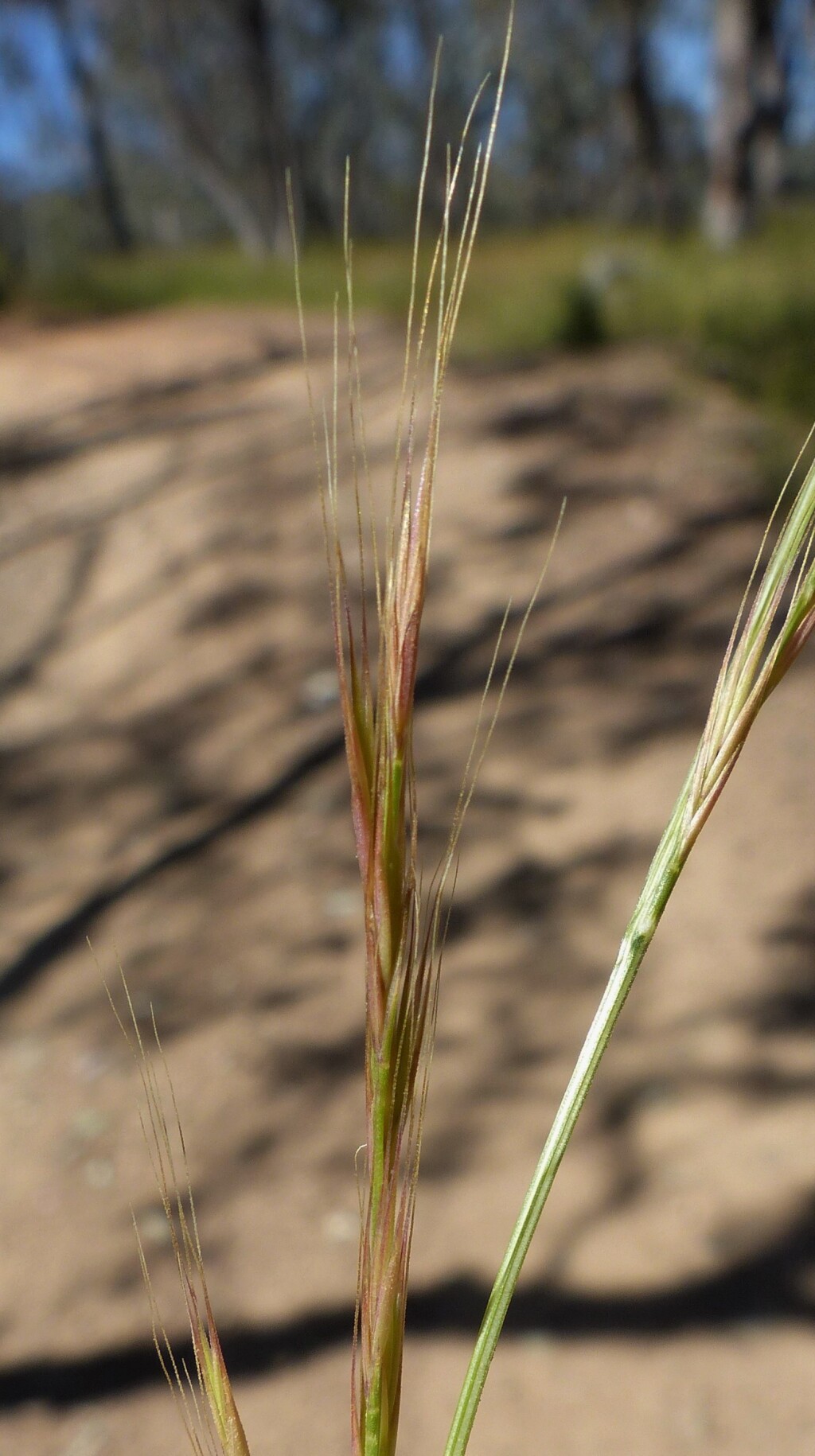Vulpia myuros
(L.) C.C.Gmelin Rat's-tail FescueTufted annual, culms slender, erect or ascending, to 70 cm high. Leaf-blades flat or inrolled, to 15 cm long and 3 mm wide. Inflorescence a one-sided panicle (rarely a raceme), erect or slightly drooping, 5–30 cm long, not or barely exserted from uppermost leaf-sheath. Spikelets 5–11 mm long (excluding awns), 3–7-flowered, mostly fertile; lower glume 0.5–2.5 mm long (one-tenth to four-tenths as long as upper), upper glume 3–8 mm, unawned or with an awn to 1 mm; body of lemma 4.5–7.5 mm long, smooth to scabrous, awn usually up to twice as long as lemma body, callus rounded, c. 0.2–0.3 mm long. Flowers Aug.–Dec.
LoM, MuM, Wim, GleP, Brid, VVP, VRiv, MSB, RobP, MuF, GipP, OtP, WaP, Gold, CVU, GGr, DunT, NIS, EGL, EGU, WPro, HSF, HNF, OtR, Strz, MonT, HFE, VAlp. Common throughout the State.
Stace & Cotton (1982) indicated that the variation between the two forms (f. myuros and f. megalura) is continuous, although most Australian collections can be unambiguously placed and the two are recognised here. Both forms occur together throughout the range of the species with forma megalura the less common, being largely confined to areas west of Melbourne. Mixed populations of V. myuros and V. bromoides, the two most abundant species of Vulpia in the State, are not uncommon.
Walsh, N.G. (1994). Poaceae. In: Walsh, N.G.; Entwisle, T.J., Flora of Victoria Vol. 2, Ferns and Allied Plants, Conifers and Monocotyledons, pp. 356–627. Inkata Press, Melbourne.
 Spinning
SpinningStace, C.A.; Cotton, R. (1982). Nomenclature, comparison and distribution of Vulpia membranacea (L.) Dumort. and V. fasciculata (Forskal) Samp.. Watsonia 11: 117–23.





